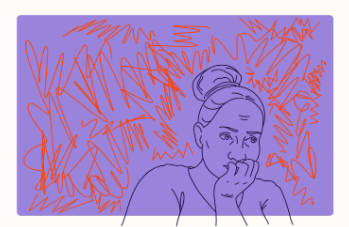Do you know how the mind acquires a language? You may be reading this right now, but how did you come to understand these words? For people whose first language is English, the answer would be through early learning.
For millennia, humanity has communicated through verbal and written language, dating all the way back to the Sumerians in 3100 BCE (Gelb). No other known species has managed to achieve this feat. Although many can communicate through gestures, sounds and code, none of these could be classified as a language. We, as a species, have been the only ones with this incredible ability: the ability to use grammar and sentence structure to create something new (Napoli).
Language learning begins before we are even born– our brains are hardwired that way– and sets the foundation for learning our first language. Results from a study done by the University of Würzburg in collaboration with the LSCP in France reveal that the changing prosody of a newborn’s cry is affected by the language they are exposed to. Prosody is the sound and rhythm unique to a language. When comparing the cries of French and German newborns, the former often had a rising prosody while the latter often had a falling prosody. The sounds and rhythm of a language are essential to acquisition, which is why infants passively learn the sounds of a language by listening to those around them (Mampe, Birgit, et al.). As they grow older, they proactively learn grammar and syntax, enabling them to form complex sentences necessary for everyday life (“How Does the Brain Learn Language?”).
You may be wondering: what about adults? Why is it that people seem to lose this “magic” learning ability as they get older? There are two main reasons. First, adults focus on different parts of the language than babies do. While an adult may concentrate on individual vocabulary words, babies learn chunks of words and associate them with a meaning. As a result, adults usually don’t know how words connect to each other in a sentence, while babies do (Arnon). The second reason is input. Babies are constantly surrounded by the language they are learning, which increases their neuroplasticity. As they use a language more and more, the neural pathways develop, organize, and strengthen over time, making their learning far more efficient than a simple 5-minute Duolingo session or an hour-long class period that adults would normally take (Galia).
However, don’t fret if you’re looking to learn a new language. There are several people who become bilingual or multilingual well into adulthood. By immersing themselves in the language, adults can replicate the experience babies have when learning their first language. Immersion can come from interacting with a native speaker, or from consuming various forms of media. As a bonus, you can familiarize yourself with the culture and lingo of a language that you may not have known from a textbook alone (The Yale Ledger).
All in all, the process of learning a language is one that takes plenty of time and input in order to learn the meaning, grammar, syntax and prosody of a language. Newborns learn their first language through listening and observation, piecing together the meanings behind large chunks of words. They are proactive learners who immerse themselves in their language 24/7, allowing them to learn more efficiently than an older human. Language and writing are complex abilities that are thought to be unique to humans, and thanks to evolution, they can be acquired through time and patience.
Works Cited:
Arnon, Inbal. “Starting Big: Why Is Learning a Language Harder for Adults Than for Children?” Frontiers for Young Minds, vol. 11, Apr. 2023, https://doi.org/10.3389/frym.2023.1011546.
Galia, Jr. “Language Immersion and Cognitive Development.” Jump Immersion School, 25 Oct. 2024, jumpimmersion.com/language-immersion-and-cognitive-development.
| Gelb, Ignace J. “Sumerian Language | History, Characteristics, and Facts.” Encyclopedia Britannica, 27 Sept. 2024, www.britannica.com/topic/Sumerian-language. |
“How Does the Brain Learn Language? - Dana Foundation.” Dana Foundation, 16 Feb. 2024, dana.org/resources/how-does-the-brain-learn-language.
Image of baby. 6 Apr. 2020. The Language Workshop for Children, https://languageworkshopforchildren.com/thinkyourchildistooyoung/. Accessed 6 Nov. 2024.
Mampe, Birgit, et al. “Newborns’ Cry Melody is Shaped by their Native Language.” Science Direct, Elsevier, 15 Dec. 2009, https://www.sciencedirect.com/science/article/pii/S0960982209018247?ref=pdf_download&fr=RR-2&rr=900fd12e08e1729e Accessed 6 Nov. 2024.
Napoli, Donna Jo. The Five-minute Linguist: Bite-sized Essays on Language and Languages. Edited by Rickerson and Barry Hilton, 2nd ed., 2012, www.swarthmore.edu/sites/default/files/assets/documents/donna-jo-napoli/5minlingAnimals2012.pdf.
The Yale Ledger. “The Best Ways to Learn a Language according to Research – Ledger.” Campuspress.yale.edu, 19 Dec. 2023, campuspress.yale.edu/ledger/the-best-ways-to-learn-a-language-according-to-research/.

 The American Education System: A Widening Divide
The American Education System: A Widening Divide